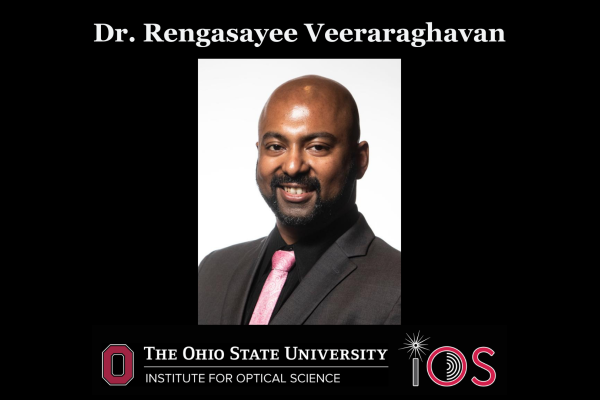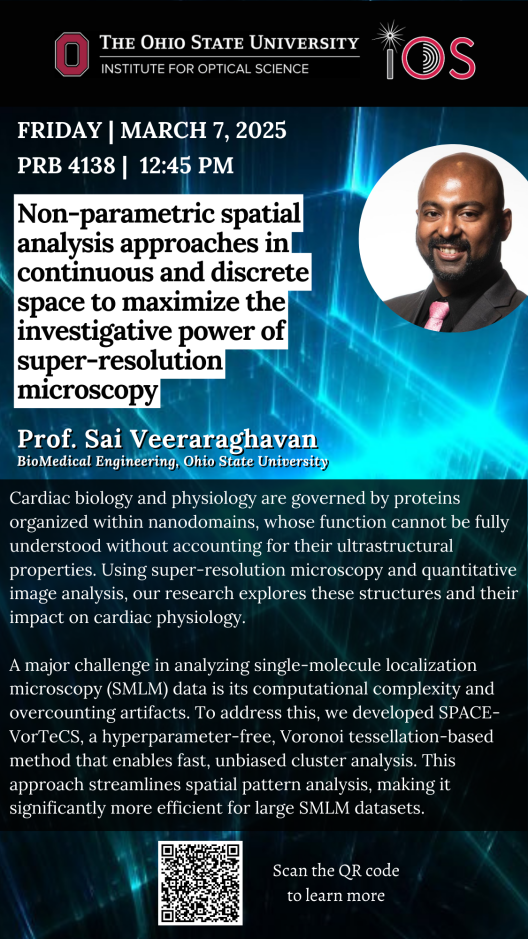
IOS Member Research Series
Non-parametric spatial analysis approaches in continuous and discrete space to maximize the investigative power of super-resolution microscopy
Rengasayee Veeraraghavan, Associate Professor
BioMedical Engineering, Ohio State University
Time: Friday, March 7th 2025 at 12:45PM
Location: Physics Research Building 4138 (4th floor), & Zoom

ABSTRACT: Growing evidence indicates that cardiac biology and physiology at cellular through organ scales are governed by the action of proteins organized within nanodomains with specialized ultrastructural properties. Multiple phenomena have been identified, whose function and dysfunction cannot be predicted without accounting for the makeup and behavior of nanodomains. Thus, my laboratory’s investigative approach is grounded in high resolution structural and functional imaging, complemented by our development of novel imaging and image analysis approaches. I will present work illustrating how super-resolution microscopy and quantitative image analysis have enabled us to make inroads into cardiac physiology, and high light recent work on a computationally efficient, hyperparameter-free approach to assess spatial relationships from point coordinates in continuous space, such as yielded by single molecule localization microscopy (SMLM).
Point pattern analysis, although a powerful spatial statistics framework, has been of limited utility due to its nonlinear time complexity and consequent computational demands for processing large SMLM datasets. To address this, we have developed a computationally efficient adaptation of point pattern analysis, called Spatial Pattern Analysis using Closest Events (SPACE), which gains efficiency by operating on discrete data like digital images, instead of continuous Euclidean coordinates. However, this solution necessitates rigorous and meaningful discretization of SMLM data. Additionally, SMLM often produces multiple localizations per fluorophore molecule, which leads to overcounting artefacts that confound analysis of nearest neighbor distances between individual localizations. Thus, SMLM data are ideal for cluster analysis. However, most cluster analyses are computationally demanding and prone to biases due to reliance on user-defined hyperparameters. We offer a solution to both problems, SMLM discretization and overcounting artefacts, using a hyperparameter-free Voronoi tessellation-based cluster analysis, which can produce the discrete inputs needed for SPACE as digital image masks labeling localization clusters. Our pipeline, Spatial Pattern Analysis in Continuous space Enabled by Voronoi Tessellation-based Cluster Segmentation (SPACE-VorTeCS), uses parameter-free Voronoi tessellation, and achieves almost linear time complexity by addressing key computational bottlenecks. Thus, SPACE-VorTeCS provides a fast, unbiased, and generalized approach to rapidly analyze the spatial patterns in SMLM data.
- No Registration Needed -
Refreshments will be provided.
This event is open to the public.

